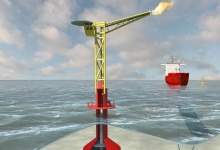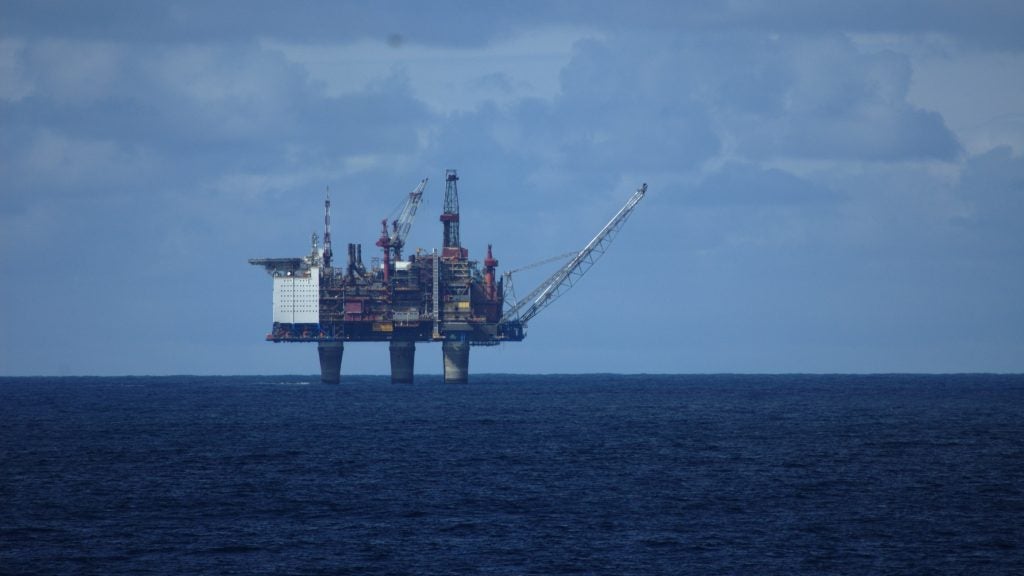

To actively seek out a marginal field for exploration and production is a rarity. Even in times of a high oil price, the slim margins, short lifespan and risk profile will result in the field being owned but not explored. With conventional offshore exploration techniques, the reward just doesn’t justify the risk.
With unconventional, or technologically advanced, production methods on the other hand, the balance can shift in favour of exploiting the oil and gas present in the field. Cut down the costs and risks to a level that allows for an agreeable profit and the proposition becomes more attractive.
There are two main ways to do it; innovate with technological advances that enable operations to be carried out more efficiently, or lower the cost of the workforce carrying out and monitoring operations. Changing shift patterns, reducing leave, or cutting down on the luxuries and everyday comforts that are provided for a life offshore can all contribute, but real human workers will always come at great expense. So why not do away with them altogether? That is pretty much what Manchester-based Enegi Oil is attempting to do.
Starting in the North Sea the company is working to replace the large platform and many people approach with a single production buoy and infrequent site visit method of oil production. Having started development on the project four years ago, the company believes that any downsides resulting from the current oil price are outweighed by the growing need for more cost effective production, particularly in the North Sea where there are a host of marginal fields that don’t currently constitute attractive investments.
See Also:
"The current challenges faced by the industry in the UKCS provide substantial hurdles and require innovation and collaboration to change the trend of declining production," said Prof. Mike Bowman, non-executive director of Enegi Oil and chairman of ABTOG. "Considerable potential remains and many companies are collaborating to develop solutions and methods that are appropriate and will extend the life of production from the North Sea." So just how do you automate oil production in the North Sea?
How well do you really know your competitors?
Access the most comprehensive Company Profiles on the market, powered by GlobalData. Save hours of research. Gain competitive edge.

Thank you!
Your download email will arrive shortly
Not ready to buy yet? Download a free sample
We are confident about the unique quality of our Company Profiles. However, we want you to make the most beneficial decision for your business, so we offer a free sample that you can download by submitting the below form
By GlobalDataTaking automation to offshore exploration
Instead of a full offshore platform, production is conducted through either the smaller scale Production Buoy or the larger Normally Unmanned Self-Installing Fixed Tower (NU-SIFT) that was developed by the Marginal Field Delivery Consortium made up of from Advanced Buoy Technology and Enegi and a number of other technology partners.
Tethered to a concrete base that rests on the seabed, the legwork of the Production Buoy is carried out within an underwater buoyancy chamber that contains process equipment and electrics that operate the wellheads, flexible risers and umbilicals. Within this, well-fluids are taken in and processed with wastewater either being re-injected or treated and disposed, while the gas collected is either used to provide power and heat or flared. Once collected, the oil is transferred to an underwater storage facility, that is currently capable of storing 300,000 barrels, before it is transferred to an offloading vessel that collects it from the buoy.
In order to enable the different components to work together to carry out production, the buoy contains a sophisticated offshore wireless network, which factors in sufficient redundancy and contingency to ensure that operations are always in communication.
Enabling lower cost operations and production
While the process is designed to work autonomously, a helideck on top of the buoy enables engineers and operators to visit the site to monitor that the process is being followed and carry out any maintenance on the components if they are damaged. Safety measures installed to protect on-site visitors include watertight doors, and an independently ventilated and fire protected central access tower. The compartmental design of the buoy is designed to ensure that it stays afloat even in the event of it suffering severe flooding or hull damage.
In addition to cutting operational costs by removing full time staff, the approach will also be easier to deploy, have significantly lower construction costs and be easier to redeploy in another area than a full-scale platform.
The PARLOC report is considered a reliable marker of consistency and safety standards in offshore pipelines .
The NU-SIFT solution is much bigger in scale but conducts production in much the same way. The major differences include the capability to accommodate people on site. The design, which has already been submitted for use at the Fyne Field in the North Sea, includes storage capacity of more than 100,000bbls.
With the design of the infrastructure and equipment mapped out, the consortium has recently tied up a number of partners to help with the final roll out of the solution. Norwegian technology provider Kongsberg has joined the consortium to deliver the remote control and monitoring technology to keep track of and, if needed, take control of operations, while AGR Well Management will manage the well engineering element of the project.
Managing the processing side of the project, Frames is developing separation, treatment and control systems. "Now more than ever, there is a strong need for clever, standardised, and economical production facilities to unlock the resources from marginal and stranded fields," said Jacques Melman, CEO of Frames. "[We] will bring the best know process solutions with a key focus on both safety and the environment."
While the company recently announced that it was unable to reach agreement with offshore engineering giant Wood Group, it is confident that it will be able to start autonomous production in the near future at its North Sea. Beyond that, it has confirmed that it is looking at acquiring further assets to prove that the normally unmanned installation approach can tip marginal fields back into profitability.
Following in the footsteps of other extractive industries
While the offshore sector was still reaping the benefits of high prices, extractive materials operators in the mining sector experienced the crunch that comes when conditions are in decline. The sector, most boldly in the form of Rio Tinto, turned to technology and automation to cut costs and today, fully autonomous operations are a reality. With the oil industry experiencing the same pressures, the presence of people offshore may soon be in decline.
Should the offshore industry choose to travel down that path, it will not come without its challenges. Industrial regulations and operating practices, particularly with regard to safety and environmental impacts, are so entrenched that reshaping them to meet such monumental changes as transitioning from human labour to robotic will take huge amounts of time and money. Equally, while it may be feasible to replace people on a technological basis, overcoming the inevitable strikes and union fightback against the early steps is no easy feat.
Once issues such as this are taken into account, the rationale for a relatively unknown operator to test and develop a new technologically heavy and cost light approach to offshore, becomes clear. Established players, with their huge workforces and global operations are just not in a position to pioneer such ambitious endeavours and would likely struggle to make it a success.
But if Enegi is successful, the impact will go far beyond its operations in the North Sea. The technology being developed through the consortium would be in demand across the sector and particular in regions that are currently viewed as having peaked in terms of potential production.
"The opportunities we are focused on are economic and provide good returns for investors at current prices, and, should the oil price recover to say $70 per barrel, the returns will be significantly improved, said Enegi CEO Alan Minty. "We know that the oil price decline has increased the attractiveness of our offering as many producing fields and planned projects are now in the red or forecast to be so and hence they need cost effective solutions for delivery."
If it leads, others will surely follow.





